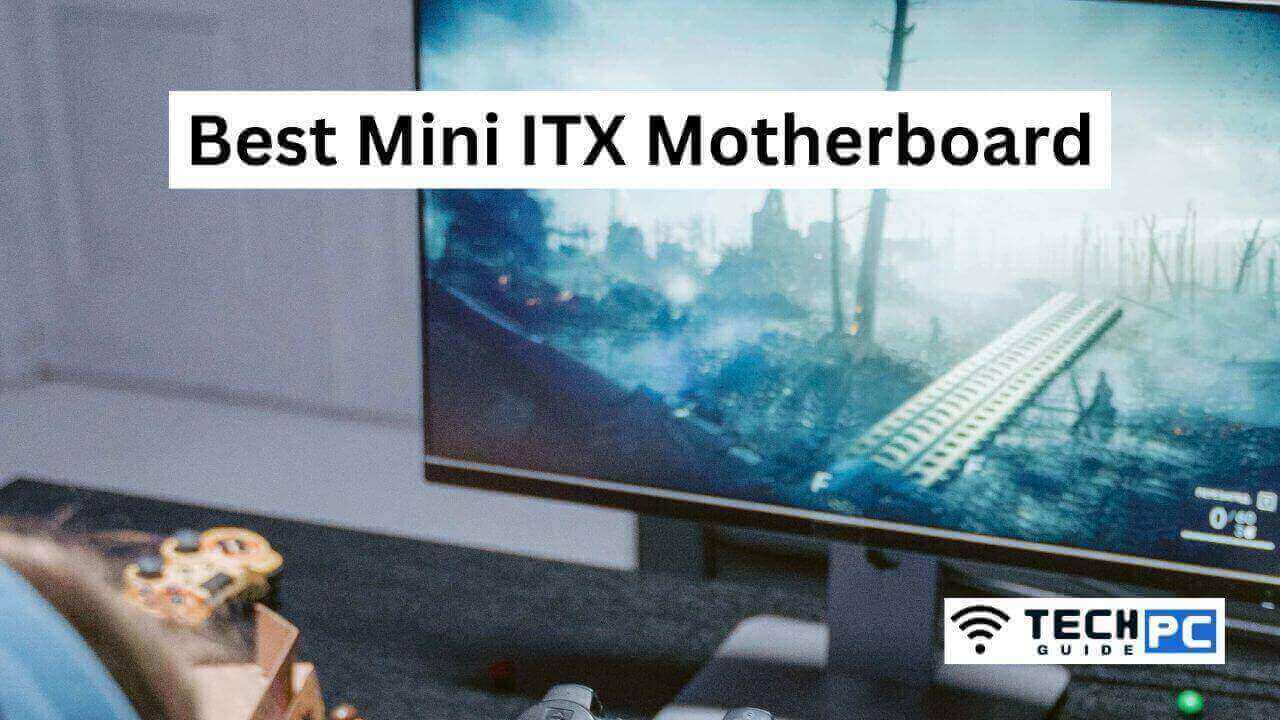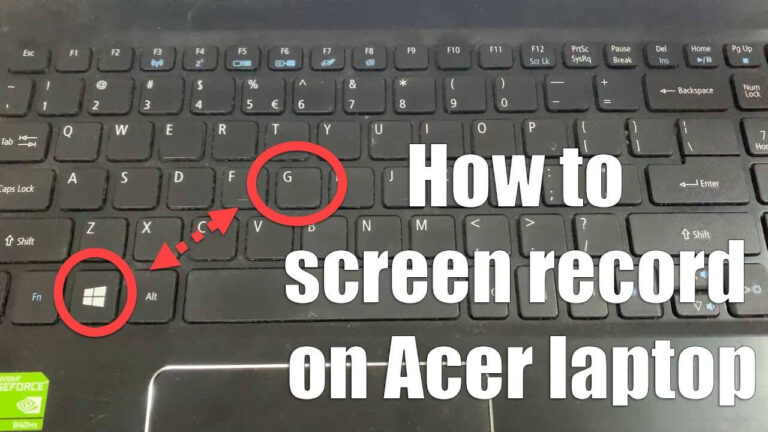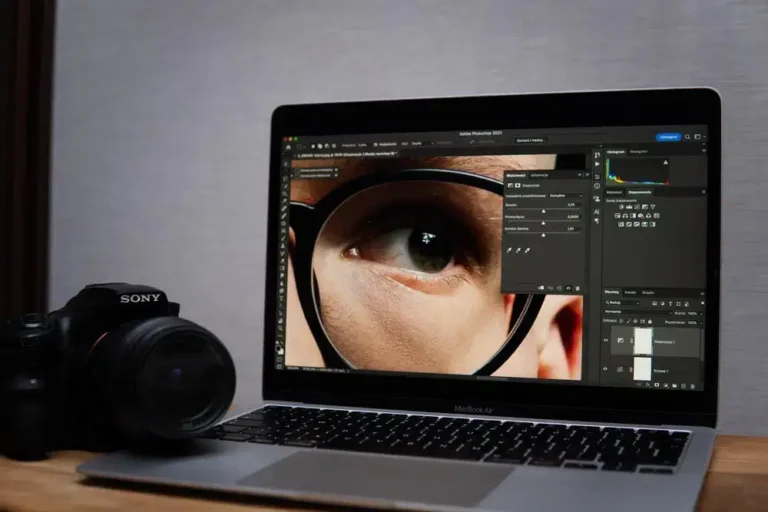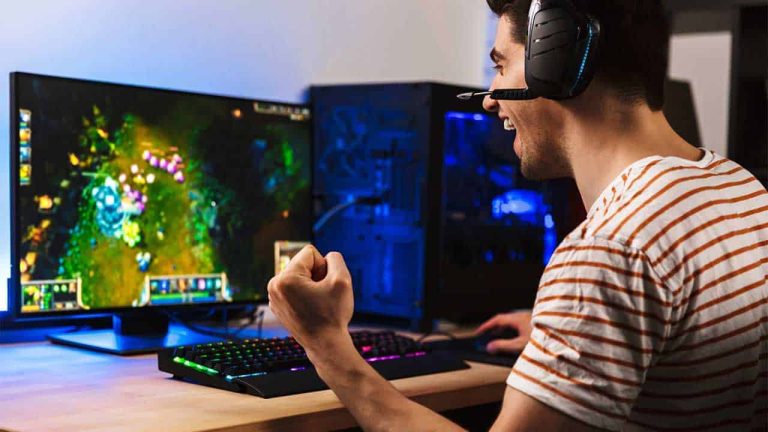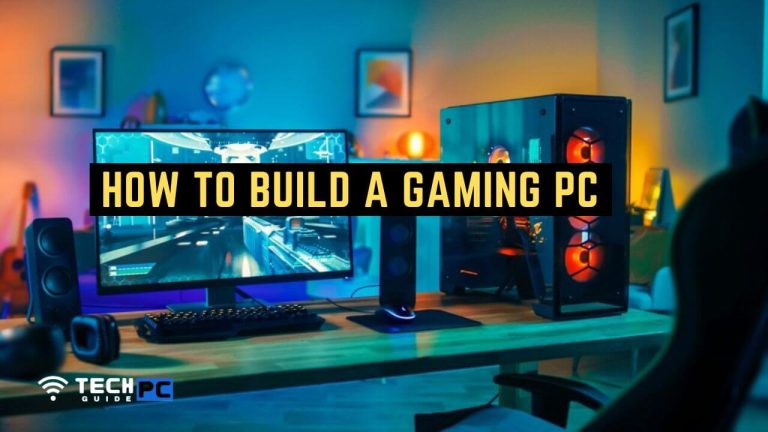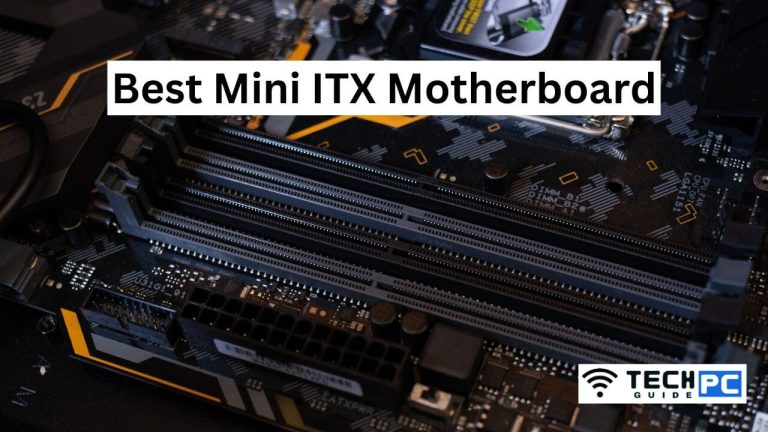10 Best Monitors for Overwatch Gameplay In (2023)
Overwatch isn’t only a ‘tick heads and wins’ FPS game. To succeed in this game, it’s essential to know a lot about it and be skilled. However, if your equipment isn’t good enough, all your hard work won’t matter much. Turning out to be top-level takes devotion, tolerance and a lot of muscle memory. Gear explicitly intended for serious gaming helps reward your understanding and tedious preparation.
A decent gaming monitor needs alternatives like a refresh rate of at least 144 frames per second, and preferably 240. Practically every expert that we will in general investigate is utilizing a screen somewhat like that. Consequently, this offers countless advantages.
Ordinary monitors refresh the picture sixty times each second. While a normal screen works well for movies or casual single-player games, it’s not suitable for fast games like Overwatch. A fast monitor lets you keep up with speedy characters, like Genji, who might be bothering your team’s healers during the game.
When things on the screen move more smoothly, it’s easier to notice and understand all the different stuff flying around and the special moves used during a big team fight.
Best Monitor for Overwatch Gameplay
The executive’s alone reason the client to win a ton of battles in battle vogue games. If you really like gaming, it’s a good idea to get a monitor that refreshes really fast. Also, make sure your computer can keep up with the game’s speed. This helps you stay on top of the game. Here in this article, I am going to discuss the best monitors for Overwatch.
1. ViewSonic ELITE XG270
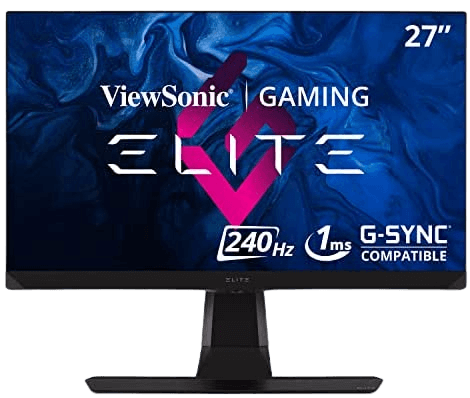
- The ViewSonic Elite XG270 is an excellent gaming monitor. It has a 240Hz refresh rate and responds quickly, making images look very smooth and clear. It supports FreeSync to reduce screen tearing, and its very low input lag makes gaming and using your computer feel very responsive.
Screen Size and Design
It includes a thin and smooth design with 27-inch screen size. Pinnacle brightness and viewing angles are fantastic; in any case, it’s not the ideal screen for dull rooms. This current screen’s IPS board has a low differentiation proportion, and its dark consistency is moderately poor. HDR support is available, and there’s even some RGB bling to set the mindset. At the lower part of the unit are two RGB strips that can be controlled freely of the strip on the back, and all the RGB strips can be matched up to one of three distinctive regulator programs because of ViewSonic’s enrollment in the RGB Alliance.
Additional Features and Ports Availability
The IPS display’s super quick 1ms (GTG) 240 Hz refresh rate empowers smooth screen changes while offering precise shading reproduction and wide viewing angles.
Comparison
The ViewSonic Elite XG270 features a 240Hz refresh rate when compared with its previous model, and the ViewSonic VX2758-2KP-MHD features a 144Hz refresh rate. When we talk about screen resolution, the ViewSonic Elite features 1920x1080p resolution, whereas the other features 2560x1440p resolution. The response time of Elite is 1 ms, while the other features a 3 ms response time. Moreover, the Elite series comes with built-in speakers, while the ViewSonic VX2758-2KP-MHD has no built-in speakers.
Recommended: Best Monitors for Eyes
Specs
- Screen size: 27 inches
- Resolution: 1080p(1920×1080)
- Ports: USB 3.0 ports, 2 HDMI, 1 Display Port
- Display Technology: LCD
- Response time: 1ms
- Refresh rate: 240Hz
Pros
- Blazing fast 240Hz refresh rate on an IPS panel.
- Low motion blur and input lag.
- Ergonomic design.
- Subtle use of RGB.
- Affordable price.
Cons
- Colour results could be better.
2. Acer SB220Q bi

- If you need a moderate option for one of the best monitors for Overwatch gameplay, the Acer SB220Q bi merits a look, including AMD’s FreeSync against tearing innovation, a 4ms pixel response, and a 70Hz invigorate-rate to give smooth, nearly curio-free gaming performance.
Screen Size and Design
Its 21.5-inch In-Plane Switching (IPS) panel delivers a clear 1,920-by-1,080 (FHD) picture, and it sports a super-slim zero-edge design. In all actuality, its grayscale and review point execution is average. It is additionally missing a couple of key highlights, for example, USB ports, a completely flexible stand, and VESA mount ability, all highlights that you get with more costly models.
Additional Features and Ports Availability
You don’t get any USB ports with this display; however, you get two video inputs: one HDMI and one VGA, all situated around the back facing outward. The monitor lacks speakers and earphone input, so you’ll need to connect the speakers to your source gadget – PC or PC. On the cabinet, two or three buttons are used to control the screen and explore the settings menu.
Comparison
When we compare Acer SB22Q bi with its most competitive rival, Acer KG221Q mix, the response time of SB22Q is 4ms while that of KG221Q mix is 1ms. Both of these have similar screen resolutions, 1920x1080p. Moreover, the KG221Q comes with built-in speakers, while the SB22Q doesn’t have any built-in speakers. Moreover, when we compare the prices of both these monitors, the Acer SB22Q is much cheaper than the Acer KG221Q.
Recommended: Best Motherboard for FX 8350
Specs
- Screen size: 21.5 inch
- Resolution: 1920x1080p
- Display Technology: LCD
- Refresh rate: 75Hz
Pros
- Sleek design
- AMD FreeSync enabled
- Inexpensive
Cons
- No USB ports
- Middling colour and grayscale performance
3. Acer Nitro XF272 Xbmiiprzx
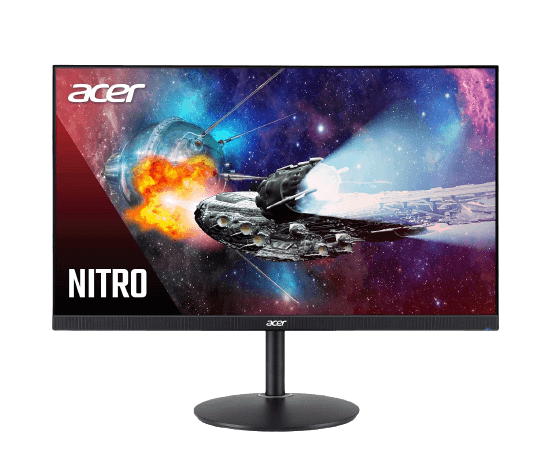
- The Acer XF272Q highlights one of the 240 Hz TN panels most recent cycles, making some reaction memories of 0.3 ms, in contrast to the standard 1 ms. It likewise accompanies gaming highlights essential to speedy games like Overwatch, as versatile sync innovation and motion blur decrease.
Screen Size and Design
The Acer XF272Q highlights one of the 240 Hz TN panels’ most recent cycles, making some reaction memories of 0.3 ms, in contrast to the standard 1 ms. It also includes gaming features that are important for fast-paced games like Overwatch, such as adaptive sync technology and motion blur reduction.
Screen Size and Design
It has a Full HD display, making it productive to arrive at high frame rates with a mid-range assemble and 240Hz refresh rate. There are no issues with picture quality as this screen has a 27″ viewable screen.
Additional Features and Ports Availability
Input lag is likewise intangible with this screen and accompanies motion blur decrease innovation to diminish apparent haze. It is very estimable. You can get great brilliance at 250 nits. In addition, it is dissimilar to the vast majority of its peers that can strobe up to 144 Hz.
Comparison
The Acer Nitro XF272 Xbmiiprzx is superior to the Acer Predator XB273K Pbmiphzx. Even though the two of them have an IPS panel, the Nitro XV272 Xbmiiprzx has a superior differentiation proportion and fundamentally better dark consistency, just as well as better viewing angles. Nonetheless, the XB273K Pbmiphzx has a 4k resolution, which is incredible for performing various tasks. The XB273K Pbmiphzx upholds a wide color range, yet it can’t get as brilliant as the Nitro XV272 Xbmiiprzx.
Recommended: Best Laptop for Cyber Security
Specs
- Screen size: 27 inches
- Resolution: 1920x1080p
- Ports: 1 display port, HDMI 2 ports, 4 USB 3.0 ports
- Display Technology: LED
- Response time: 0.2ms
- Refresh rate: 144Hz
Pros
- Excellent overdrive implementation for ultra-fast response time
- Exemplary motion blur reduction implementation
- High pixel density
Cons
- The display port cable is not included
4. Asus ROG Swift PG279Q 27 Gaming Monitor
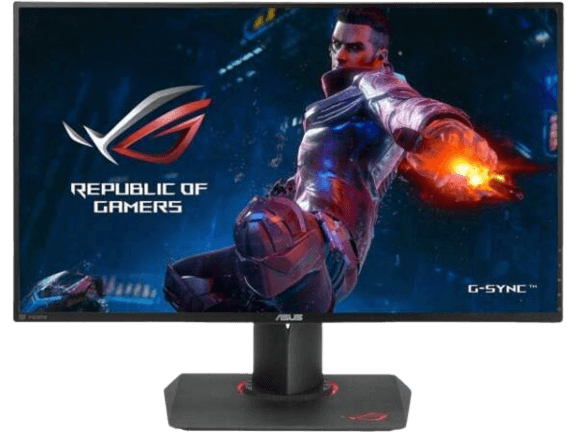
- On the off chance that you need to keep your eyes from turning out to be harmed, at that point, this best monitor screen for eyes can genuinely help you. The ASUS Rog Swift PG279Q was created by the popular organization ASUS. It is furnished with the most recent innovation and instrument to assist you with overseeing the present circumstance.
Screen Size and Design
It has a 27-inch screen with an incredible showcase of 2560 x 1440. It has G-Sync compatibility. Other than every one of these things, it offers a decent invigorate pace of 165Hz. The previous model offered a refresh rate of 144Hz, and this one has been improved. It is a level LED screen with IPS boards and a perspective proportion of 16:9. This screen is very useful and just as appealing. The wide stand base of this screen causes it to remain set up; with the stand neck, you can change it for a decent office show.
Additional Features and Ports Availability
Like different screens in a similar value range, the ASUS Rog Swift PG279Q shows splendid and incredibly intense pictures that will assist you with seeing the great nature of pictures. The greatest brightness level of this screen amazingly goes up to 391 lux. With this brightness level, this screen gets one of the best brightness screens we have ever seen. It additionally accompanies a pre-installed component and furnishes clients with full command over the screen. You can change it according to your requirements.
Comparison
The ASUS TUF VG27AQ is better compared to the ASUS ROG Swift PG279Q. The two screens convey a similar superb gaming experience and are among the best we’ve tried so far for gaming. The TUF upholds FreeSync variable revive rate (VRR) innovation, while the ROG upholds G-SYNC VRR. Their distinction is, by and large, performance is, because of the HDR support that the TUF gives and because of its quicker refresh rate that assists motion with looking smoother.
Specs
- Screen size: 27 inches
- Resolution: 2560×1440
- Weight: 15.43 pounds
- Dimensions: 9.4 x 24.4 x 21.8 inches
- Ports: 1 HDMI port, 1 display port, 2 USB ports, and 1 line audio in and audio out
- Audio: 2W x 2 Stereo RMS
Pros
- It has a solid and unique design.
- It offers wide view angles
- It is flicker-free.
- It protects your eyes in different manners.
- Height adjustment
- The USB port is available
- VESA mount capability
- Gaming Monitor
- Smart cable management system
Cons
- Sometimes colour bleed issues
5. Dell S-Series Gaming Monitor
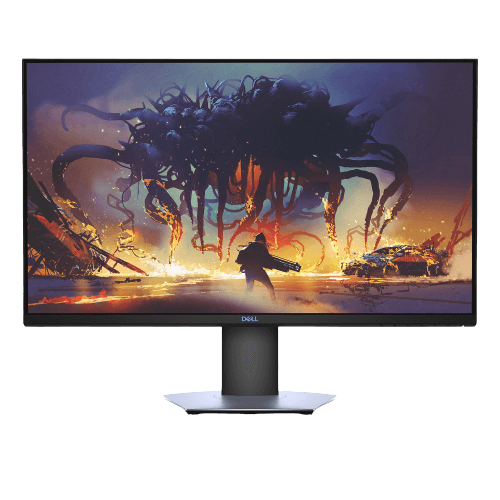
- The Dell 27 Gaming Monitor (S2719DGF) is pure play for PC gamers and esports types, giving an extremely high refresh rate and smart pixel reaction that will fulfill those purchasers. It needs HDR support, in any case, and isn’t ideal for video watching.
Screen Size and Design
The 27-inch 1440p screen has a 75Hz Overwatch refresh rate, which ought to satisfy any easygoing gamer. In the meantime, clients more inspired by a screen for video or photograph altering will be happy with the striking IPS board that hits 99% of the sRGB color range.
Be aware of certain warnings – built-in speakers give restricted sound clarity, and they don’t get exceptionally boisterous.
For a QHD screen in 2020, not supporting high unique reach (HDR) is additionally baffling, yet not appallingly astonishing in a particularly reasonable presentation. Anybody willing to ignore those defects may get a great deal of mileage out of the S2721D.
Additional Features and Ports Availability
The monitor screen isn’t massive by configuration on account of its three-sided ultrathin bezel design. Two HDMI 1.4 ports, DisplayPort 1.2, sound line-out, power connector, and security lock opening sit under the back. Having a type of USB availability would have gone far regarding flexibility. Setting up the stand is genuinely simple, and placing the screen along the X, Y, and Z tomahawks feels smooth. The capacity to turn the S2721D vertically is more, too. Be careful that stopping links while the stand is connected is marginally troublesome.
Monitor controls for things like power, settings, and volume are situated on the base right. 3w speakers put at the base seem like a greater amount of an idea in retrospect expansion than something completely included. Volume levels sound to some degree low even at its most noteworthy setting. In any case, in an absolutely quiet room, sound quality is sensible. Clients will likely be in an ideal situation utilizing earphones or purchasing speakers.
Comparison
The Dell S2721DGF is vastly improved generally than the Dell S2719DGF. The S2721DGF has a quicker refresh rate, and the IPS board delivers much better viewing angles. The S2721DGF adds HDR support; however, because of the low peak brightness and frustrating contrast, this doesn’t add a lot.
Specs
- Screen size: 27 inches
- Resolution: QHD Wide 1440p
- Ports:
- Display Technology: LCD
- Refresh rate: 155Hz
Pros
- Affordable
- Beautiful 27-inch 1440p screen at 75 GHz
- Highly adjustable both horizontally or vertically
Cons
- Average speakers
- Low contrast ratio.
- No HDR support.
- Typical TN-panel fading at extreme off-centre angles.
- Lacks DisplayPort cable.
6. Acer XF250Q Xbmiiprzx
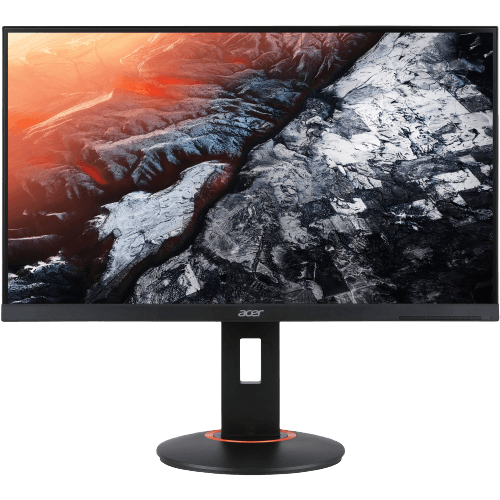
- The Acer XF250Q is the most expense-productive 1080p 240Hz 1ms response time best monitor for Overwatch. Furthermore, it’s G-SYNC viable and has an ergonomic stand! Regardless of whether you need to update your old 144Hz monitor to a quicker model or you’re new to speedy serious gaming and need to go for 240Hz straight away, the Acer XF250Q is the most reasonable 240Hz display you’ll discover yet it will furnish you with an extraordinarily responsive gaming experience.
Screen Size and Design
Actually, like most 24.5″ 1080p 240Hz 1ms models, the Acer XF250Q depends on a TN board with 400-nit top brightness, a 1,000:1 difference proportion, 8-digit shading profundity, and 160°/170° viewing angles. In this way, to the extent the picture quality goes, you’re getting the very survey experience that you would get on most 240Hz screens. In contrast with IPS and VA boards, you get cleaned-out tones and limited viewing angles, yet you do get a fast 1ms response time speed for insignificant ghosting.
With the appropriate adjustment, the Acer XF250Q screen offers good picture quality while the restricted viewing angles aren’t irksome insofar as you’re before the screen.
Additional Features and Ports Availability
The build quality of the Acer XF250Q gaming screen is, to some degree, modest with basic plastics. Yet, the stand is completely ergonomic with up to 150mm of stature change, – 5°/35° slant, +/ – 60° turn, 90° rotate, and 100x100mm VESA mount compatibility. Connectivity choices incorporate HDMI 1.4, HDMI 2.0, DisplayPort 1.2, two 2W coordinated speakers, and an earphone jack. FreeSync works over both HDMI 2.0 and DP with a 48-240Hz VRR range.
Specs
- Screen size: 24.5 inches
- Resolution: 1080p(1920×1080)
- Ports: USB 3.0 ports, 1 HDMI, 1 Display Port
- Display Technology: LCD
- Response time: 1ms
- Refresh rate: 240Hz
Pros
- Quick response time and low input lag
- Plenty of gaming features including FreeSync up to 240Hz, G-SYNC Compatible
- Fully ergonomic design
- Good value for the price
Cons
- Narrow viewing angles
- Inferior image quality to IPS and VA panels
- Prone to certain defects
7. Alienware AW2518Hf Gaming Monitor
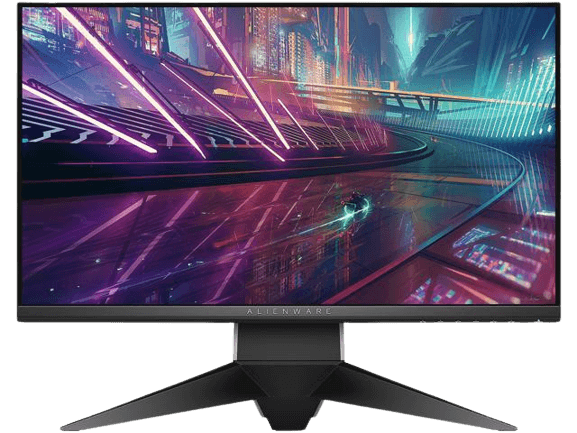
- Speed is key for gaming screens, and the Alienware 25 is among the quickest we’ve seen at this point, as far as information slack and invigorate rate. This 25-inch 1080p screen brags an input lag measure of simply a millisecond at its pinnacle refresh, which legitimizes its $509.99 list cost. (It’s regularly limited to a reasonable piece on Dell.com.) Plus, the board’s 240Hz invigorate rate will satisfy everything except the most segregating esports types, who will be excited by its smoothness for quick jerk activity games.
Screen Size and Design
The 240Hz Alienware 25 is a sensibly evaluated 25-inch 1080p gaming screen with a genuinely brilliant picture and amazingly low information slack. It will excite jittery esports dogs. However, its tones don’t dazzle.
Additional Features and Ports Availability
Confronting descending on the back in a break behind the stand, the board has a power connector for a standard three-prong PC power link, an information USB port for interfacing with your PC, and two downstream USB ports to utilize the screen as a center point. These ports are on one side of the screen stand. Two HDMI inputs, a DisplayPort input, and a 3.5mm sound yield, can be found in the break on the contrary side of the stand. At long last, two more USB downstream ports, in addition to a 3.5mm earphone jack, face straight down on the base edge of the actual screen, focused before the stand.
Specs
- Screen size: 25 inches
- Resolution: 1920x1080p
- Display Technology: LCD
- Refresh rate: 240Hz
Pros
- Comes in G-Sync and AMD Free Sync versions
- Excellent brightness and colour
- Fast response times
- High refresh rate
Cons
- Awkward port placement
- No USB-C port or speakers
- Expensive for 1080p
8. Asus VG248QE
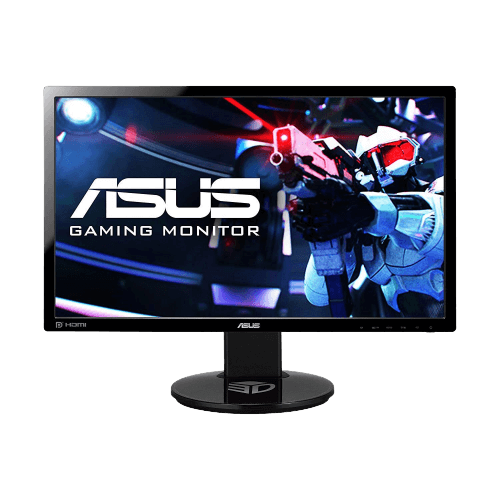
- The Asus VG248QE is a decent 144 Hz LCD screen with a 1080p resolution and a huge number of gaming-focused highlights. It has exceptionally low information slack, and its high refresh rate and low movement obscure make for extremely liquid and responsive gaming. Notwithstanding, its exceptionally tight review point and standard picture quality make it less reasonable in office conditions or for those who watch a ton of films in a dark room.
Screen Size and Design
Fortunately, it’s more moderate this time. It’s simply a disgrace that this 24-inch variant isn’t too less expensive than the 27-inch model. We were trusting the more modest size would address a more spending plan arranged passage into the great new 144Hz world, yet you’re just saving about £60.
Additional Features and Ports Availability
The VG248QE accompanies a double connection DVI link and a sound link, yet you’re on your own with regard to HDMI and DisplayPort links. Long-term parts, work, and backlight guarantee cover the screen.
Specs
- Screen size: 24 inch
- Resolution: 1920x1080p
- Display Technology: LED
- Refresh rate: 144HZ
Pros
- Fast pixel response.
- 144Hz refresh rate.
- Ergonomic stand.
Cons
- Narrow viewing angles.
- 3D gear not included.
- No USB ports.
9. BenQ ZOWIE XL2411P
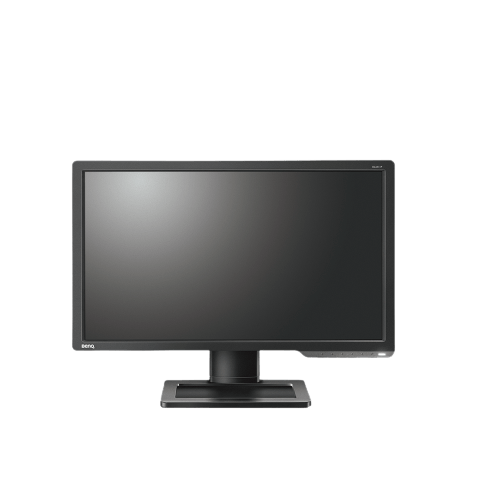
- The XL2411P esports gaming screen is the new version of the first XL2411. Black eQualizer will give gamers a positive visual encounter, permitting you to strike your adversary without a second thought.
Screen Size and Design
The BenQ Zowie XL2411P is a good 24-inch, 1080p screen with extraordinary gaming execution. It has a great reaction time, conveying clear movement with just a short haze limp along with quick items. It has extraordinarily low information slack, yet lamentably, it doesn’t uphold any of the variable’s revive rate advances, similar to AMD’s FreeSync. This screen has great pinnacle brightness and great reflection taking care of, so glare shouldn’t be an issue in a splendid room. Lamentably, it has a horrible dark consistency, and like all TN screens, the picture debases when seen at a point.
Additional Features and Ports Availability
The design for the BenQ ZOWIE XL2411P is straightforward. It comes furnished with HDMI, DVI-DL, and DisplayPort 1.2 information sources. It accompanies a Full HD 1920 x 1080 resolution display, a 1000:1 static difference proportion, and a 350 cd/m² brightness rating that creates a fresh, clear picture. This BenQ screen likewise comes outfitted with flash-free and low blue light advances, which help diminish eye strain during expanded viewing periods.
Specs
- Refresh rate: 144Hz
- Response time: 1ms GtG
- Resolution: FULL HD(1920x1080p)
- Display technology: LCD
- Ports: 1 Display Port, 1 HDMI, 1 DUAL-LINK DVI-D, 1 Output(3.5mm)
Pros
- Excellent response time.
- Outstanding low input lag.
- Good peak brightness and good reflection handling.
- Fully ergonomic design
Cons
- No AMD FreeSync
- Narrow viewing angles
- Inferior image quality to IPS and VA panels
- No 120Hz/144Hz over HDMI
10. HP Pavilion 22cwa
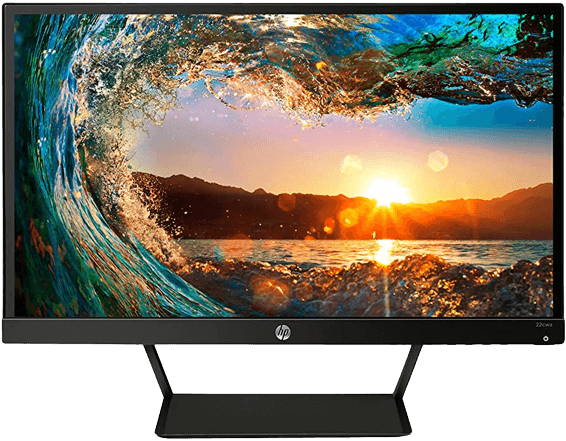
- The HP 22CWA is a fair spending screen with an IPS board. This monitor could use some more advanced features to improve the picture quality and performance, but it still does a decent job. It has wide viewing angles, which means the image stays consistent even when you’re up close. The blacks appear dark in a low-light room, and in a bright room, it manage glare well thanks to its good handling of reflections and solid brightness. Its motion handling is okay, but the 60Hz refresh rate and the average response time limit it.
Screen Size and Design
The design of the HP Pavilion 22CWA is fair, and it’s made of plastic altogether. The stand upholds the screen well and doesn’t take up a lot of work area space. However, it wobbles a little if tenderly thumped. When seen from the side, the screen looks thin and can be set near a divider. Tragically, the ergonomics are terrible, so you’ll have to invest some energy before you can put it in an agreeable position. The form quality feels alright, yet it doesn’t emit any top-notch feel at all.
Additional Features and Ports Availability
The HP 22cwa backs the more normal 60Hz refresh rate. This implies that movement in computer games isn’t as great as on quicker invigorate rate screens. It likewise doesn’t uphold Variable Refresh Rate highlights like G-SYNC and FreeSync to abstain from tearing and smooth out the picture.
Specs
- Screen size: 21.5 inch
- Resolution: 1920x1080p
- Display Technology: LCD
- Response time: 20.9ms
- Refresh rate: 60Hz
Pros
- Good overall performance
- Wide viewing angles
- Inexpensive
Cons
- Tilt-only stand
- No USB ports
What monitors do pro Overwatch players use?
– Omen X 25.
– ASUS ROG Swift PG258Q.
– BenQ Zowie XL2411P.
– ASUS VG248QE.
– BenQ Zowie XL2540/2546.
Why do pros use 24-inch monitors?
One of the primary reasons why most ace gamers play with 24-inch screens is essential because the 24-inch 1080p screen is the standard size utilized in competition play for some games. These screens are normalized across all players. So an all-inclusive screen size, resolution, and refresh rate is utilized.
What monitor do the pros use?
Pro gamers use 24-inch monitors because:
– They can achieve extremely high frame rates.
– A larger monitor would increase head movement which would decrease reaction time.
– They are the standard size used at tournaments so there is no unfair advantage between gamers.
– They fit more tightly around our eye’s main focal point.
Do Overwatch pros use G Sync?
Furthermore, incidentally, a large number of them use g-sync 240 Hz screens. I was contemplating whether they utilize the g-sync highlight of the screens since Fortnite is a sort of game where it’s extreme to get 300 FPS+ and it changes a ton so g-sync may be a decent choice for it.
Do pros use 1440p?
Pro Gamers Use 1080p Because That’s What Tournaments Use. So every contender will utilize a similar 1080p 24-inch screen running at 144Hz. For instance, if most gamers appeared with 1080p screens that ran at 60Hz, and one gamer appeared with a beast rig combined with a 240hz 1440p screen.
Why do pros play at 1080p?
The higher the frame rate the speedier the genius can react to the activity on the screen. The issue is high frame rates, like 144Hz, take a great deal of figuring ability to support 100% of the time. Top-end graphics cards could support 144Hz 99% of the time.
Is a 24-inch or 27-inch monitor better?
For customary desktop spaces and fewer resolution needs, a 24-inch screen is ideal. The 27-inch screen is generally utilized for having very good quality goal games and for having more huge perspectives on the screen. It relies upon your space, financial plan, gaming prerequisites whatnot.
Do pros use 27-inch monitors?
Nobody utilizes 27-inch screens because each competition utilizes 24 inches. So there is no reason for becoming accustomed to a 27-inch screen at that point proceeding to utilize a 24-inch. By far most masters incline toward 24-24.5″ without a doubt, however. Got an Acer Predator x34 for Christmas which has a local res of 3440×1440.
Is a 27-inch monitor too big for FPS?
While some discover 24-inch screens to be the ideal size, others may believe that even a 27-inch show is excessively small. For a great many people, 32-inch screens are excessively huge for gaming. Whatever show size you like, you ought to consistently remember the screen resolution too.
Do I need G Sync for 240Hz?
Sync isn’t needed since you never dip under 240FPS. Simply utilize a product outline limiter and set it to 240FPS. No VSync issue settled. On the off chance that you will utilize a similar machine to play different games at home for no particular reason and dip under 240Hz at that point, Sync would be useful.
Is GSync good for FPS?
G-Sync is extraordinary for FPS games like Overwatch. It wipes out screen tearing, which can be very diverting in an FPS and adds no info delay as by the same token. Also, you can in any case utilize G-Sync with an uncapped frame rate.
Do any pro gamers use curved monitors?
There are no curved monitor screens utilized in master gaming by any means, and this is for valid justifications I have depicted previously. Also, something more: Even, however, this kind of screen has now shown up on the mass market, a level screen reasonable for programming costs extensively not exactly a tantamount curved screen.
Are 240hz monitors worth it?
It’s hard for the natural eye to see a contrast between 144 Hz and 240 Hz. Accordingly, 240Hz screens will not interest the normal individual, yet if you can see the distinction and you find that it assists you with performing better in games, at that point a 240Hz screen will be certainly worth the cost.
Is a curved monitor good for FPS games?
Indeed, they are incredible for cutthroat gaming, surprisingly better than normal screens, yet not excessively much. Fundamentally, the solitary two benefits of a curved gaming screen are Space and Field of Vision (FOV). The main concern is, that curved screens are incredible, however, don’t spend more cash on a screen since it’s curved
Is a 27 monitor too big?
These days, you shouldn’t get anything short of a 24-inch screen with 1920×1080 resolution; fortunately, such screens are extremely conservative. Nonetheless, a 27-inch screen is just too enormous for 1920×1080, as you get around 81 PPI, which makes the image pixelated – text will be smudgy, and subtleties are hazy.
Is 27 inches good for CSGO?
The sweet spot for CS (IMO) is somewhere in the range of 21.5 and 24 inches. 24 would likely be better for csgo yet I don’t utilize my PC exclusively with the end goal of csgo. Watching recordings and riding the web and so forth feels better reclined on a 27 than a 24 to me.
Is a 27-inch monitor too big for CSGO?
No, it’s not very enormous. About 1.5 years prior I went from playing on a 24″ dell screen to a 27″ ASUS. Still just 60hz however I’ve had no issue by any means.
Is G Sync worth it at 144hz?
144hz is still boundlessly better than 60hz and “great”. Anyway, G-Sync carries something to the table at all invigorate rates. Playing a solitary-player game like The Witcher III and averaging between 50-60fps approves of G-sync.
Is G sync better than FreeSync?
The two technologies improve screen performance by coordinating the presentation of the screen with the design card. Furthermore, there are clear benefits and inconveniences of every: G-Sync offers premium performance at a greater cost while FreeSync is inclined to certain screen ancient rarities like ghosting.
Is Gsync the same as Vsync?
There isn’t a lot of distinction between Gsync and Vsync in genuine gaming. I have an Acer HB270HU and I can reveal to you that, what will make you feel unique and more smooth is the refresh rate of 144Hz and a decent video card to keep up to that fps, not Gsync.
Verdict
Overall, the list of the best monitors for playing Overwatch includes a wide range of gaming screens that are suitable for the game. The list comprises a scope of significant worth for the cash scope of gaming screens. The screen should have a high resolution and refresh rate for your gaming experience. Search for the one that upholds the requirements for the game.
- How to Wake Up Your Dell Laptop: A Comprehensive Guide - December 4, 2023
- How to Screen Record on Acer Laptop? - December 3, 2023
- Unleash Your Creativity: A Comprehensive Guide on How to Draw on Your Laptop - December 3, 2023

